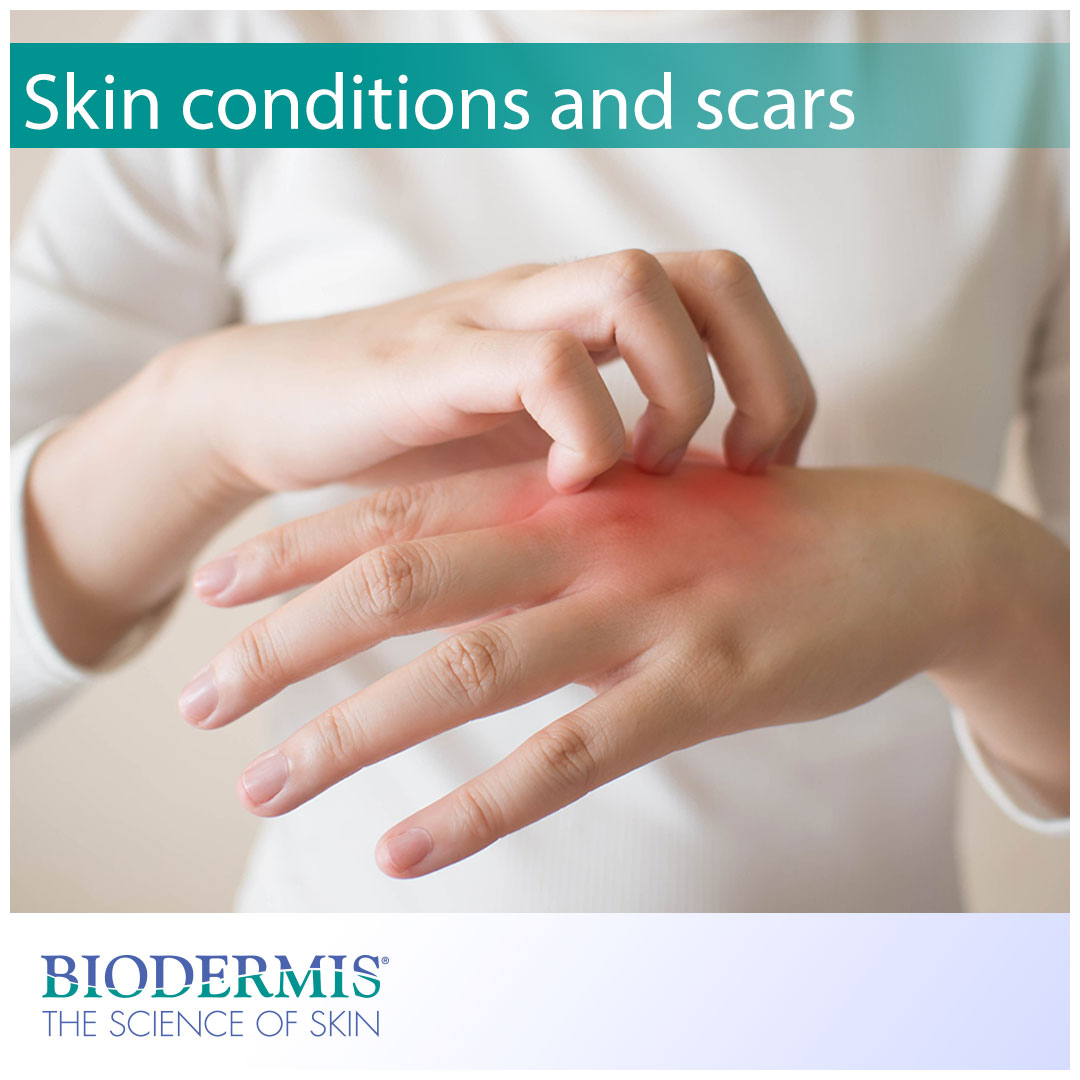Scars form due to wounds or damaged skin, which can result in many different ways. One of the ways they often form is through skin conditions that become scars over time. Sometimes, these skin conditions require surgical removal by a dermatologist. Other times, a skin condition might damage the skin due to natural causes, such as repeated skin irritation. In this article, we will explore the different skin conditions that may lead to scarring if left untreated and offer a clinically-proven solution to treat your scars.
Acne
According to the American Academy of Dermatology (AAD), acne is one of the most common and well-known skin problems that affects nearly 85% of people between the ages of 12 and 24. Up to 50 million Americans will experience some severity of acne every year. The more severe forms of acne, such as acne vulgaris, may require medical attention from a dermatologist. Acne scarring on the face or other part of the body can result if severe acne is left untreated, or if a person repeatedly irritates their acne from pimple popping. The best way to manage your acne is to maintain good hygiene by washing the face and body daily, using moisturizers on the skin, and wearing clothes that allow your skin to breathe.
Eczema
Eczema, also known as atopic dermatitis, is a common skin condition characterized by an itchy, red, scaly rash on the surface of the skin. All age groups are prone to eczema, making this condition a common target by topical prescription drug companies. In some cases, eczema may go away on its own or with treatment. Other times, it can be an ongoing problem and cause persistent irritation for some patients. For many young patients with eczema, the need to scratch the itch may be overwhelming. However, one should never scratch an eczema rash because it can lead to an open wound can cause scarring later in life.
Skin cancer
Skin cancer is a common skin condition that affects 1 in 5 Americans by the age of 70, according to the Skin Cancer Foundation. The most common types of skin cancer include basal cell carcinoma, squamous cell carcinoma, and melanoma. Skin cancer is often removed through Mohs surgery or from surgical excision of the cancer site. While often minimally invasive, cancer removal surgery can result in post-operative scarring. The types of skin cancer to look out for are listed below.
Basal cell carcinoma—forms in the deepest layer of the outermost layer of skin, the epidermis. This is also where basal cells are formed—the new skin cells that replace old ones as they die off. This type of skin cancer can present itself by the following characteristics: Elevated pink or translucent bumps with a small, round edge and tiny, visible blood vessels, small, pigmented bumps that look like rounded moles on the skin’s surface, a sore that repeatedly opens and re-opens, or a white, scaly scar with a waxy appearance and without a clearly defined border.
Squamous cell carcinoma—most frequently, squamous cell carcinoma develops on the scalp, face, ears, and back of the hands. In its early stages, squamous cell carcinoma can present itself as actinic keratoses, which are dry, scaly lesions that are flesh-colored, reddish-brown or yellow-and black. Middle-aged people with fair skin who have a history of sun exposure are more at risk for developing this type of cancer.
Melanoma—melanoma is the least common of the three skin cancers mentioned in this article, but it is also the most severe. The practice of habitually tanning or being exposed to harmful UV rays from the Sun can put one at greater risk for this cancer to develop. Melanoma can spread quite quickly to internal organs and the lymph system, making it a dangerous, malignant form of cancer. Melanoma can look like common moles and can also grow inside of preexisting moles. Self-examinations and regular doctor checkups are crucial for detecting it early on and preventing it from spreading.
Silicone gel for scars
No matter your age or how old your scar is, there are clinically-proven products you can use to reduce the scarring resulting from various skin conditions. Silicone gel technology for scars is the only evidence-based topical treatment a person can use to help flatten and fade their scars. Scars on the face, arms or other exposed area are good candidates for treatment with the Prosil silicone scar stick that comes with SPF. Scars on the body that will be covered by clothing can be effectively treated with silicone gel sheets.
Whether you have an old or new scar that was caused by a skin condition, medical-grade silicone gel should be your first therapy option. Topical silicone for scars can be attained through your physician or online at biodermis.com.
Biodermis is an innovative market leader with 30 years of expertise in the medical silicone industry. Visit Biodermis.com today to explore a complete range of scar management and post-operative care solutions.
Biodermis offers custom tailored referral programs designed to simplify and reduce the cost of your patients' post-op care. Additionally, we offer professional pricing if you opt to retail our products. Give us a call at 800.322.3729, and we will be happy to provide additional details on these programs.





